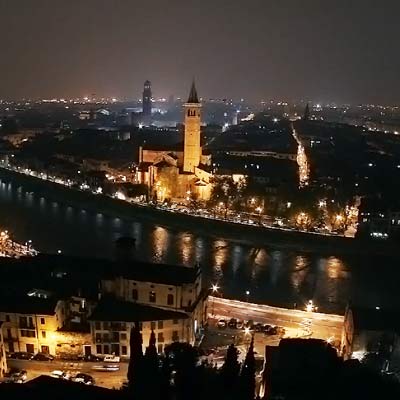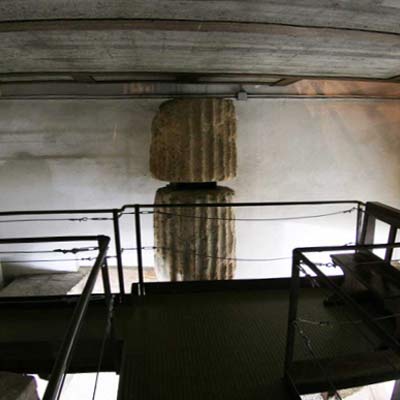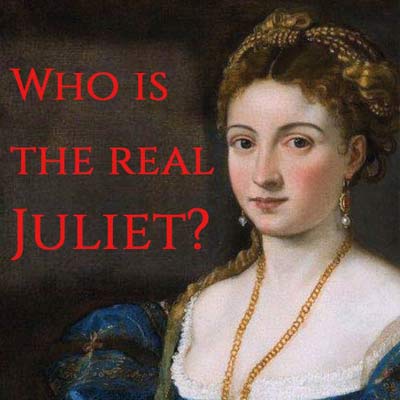Soave Castle
Soave is an enchanting medieval village enclosed by walls and crenellated towers and dominated by the imposing fourteenth-century castle. The castle of Soave is perfectly restored and can be visited. The area is famous for the production of Soave white wine. There are many wineries where it is possible to visit with wine tasting.
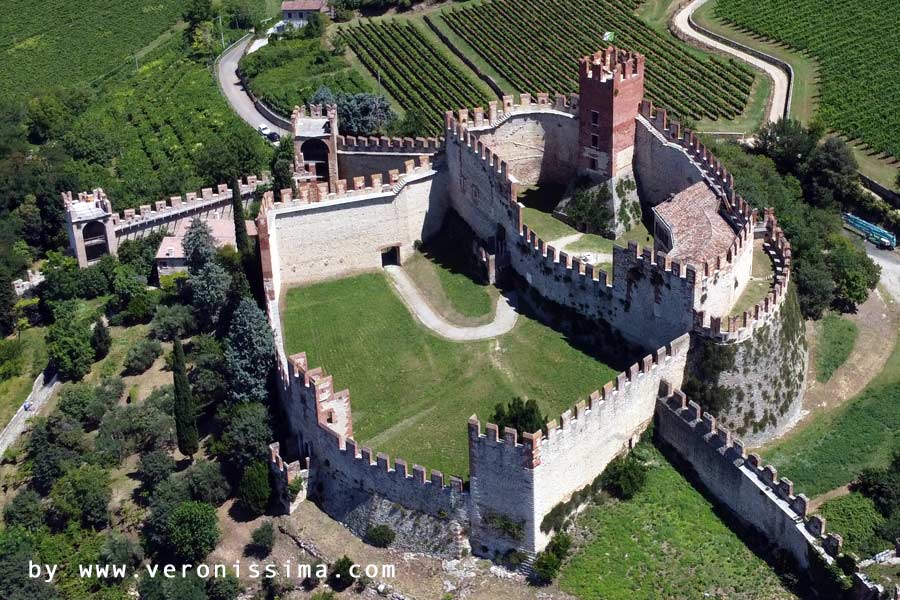
Soave is an ideal destination for a half day or full day trip starting from Verona or Vicenza. With a guided tour it is possible to discover the history and the stories of the castle, walk through the alleys of the fortified village and have a tasting of classic Soave wines.
Oncoming Tours
Info & Bookings:
+39 333 2199 645 info@veronissima.com P.I. 03616420232 C.F. CPPMHL74L13L781C
Soave Castle Guided Tour
You can access the castle of Soave both on foot and by transport.
On Foot
We start from the central Antenna square in the very center of Soave village. Through the path, a bit steep but very suggestive, we get to the entrance.
By Car or Touris Coach
By car, van or tourist bus, you can arrive at the convenient private parking of the castle via the paved road that climbs from the north side of Mount Tenda.
The Entrance
The main entrance looks north, protected by a tower and a drawbridge. On the tower is preserved a bas-relief depicting St. George defeating the dragon, a theme dear to the medieval knights of which the saint was the patron. The entrance today is instead from the south side, through the garden of the custodian.
The Outer Courtyard
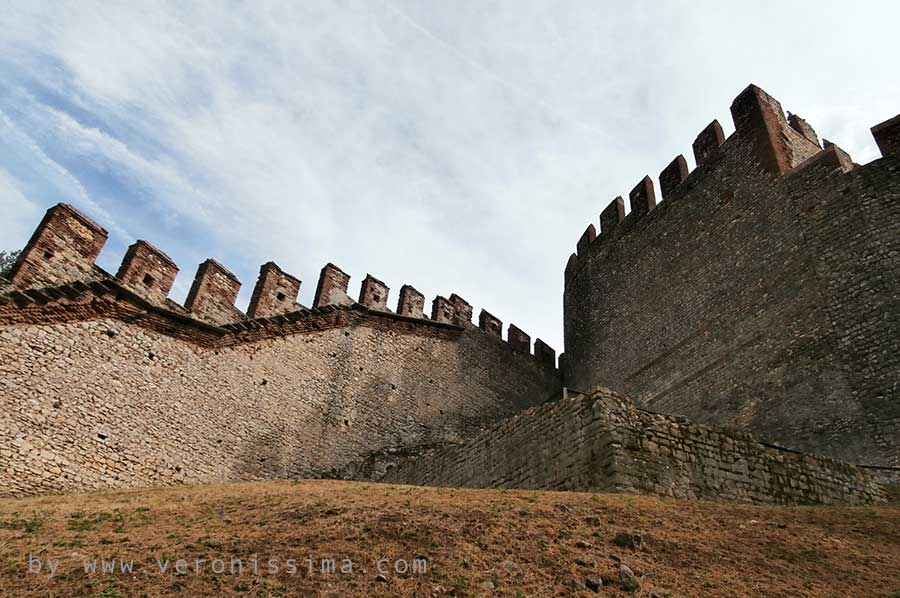
Once inside, you find yourself in the first of the three internal courtyards, a large empty space with the remains of a Romanesque church with three apses dating back to the 10th century. In it, the population of Soave found refuge and prayed close to the castle in case of enemy attack or siege.
Through a passage protected by a sliding gate, you access the second courtyard called "della Madonna" because of a fresco dated 1321 of the Virgin of Mercy who welcomes the worshippers under her mantle, almost a symbolic representation of the castle itself and its protective function.
The Inner Courtyard
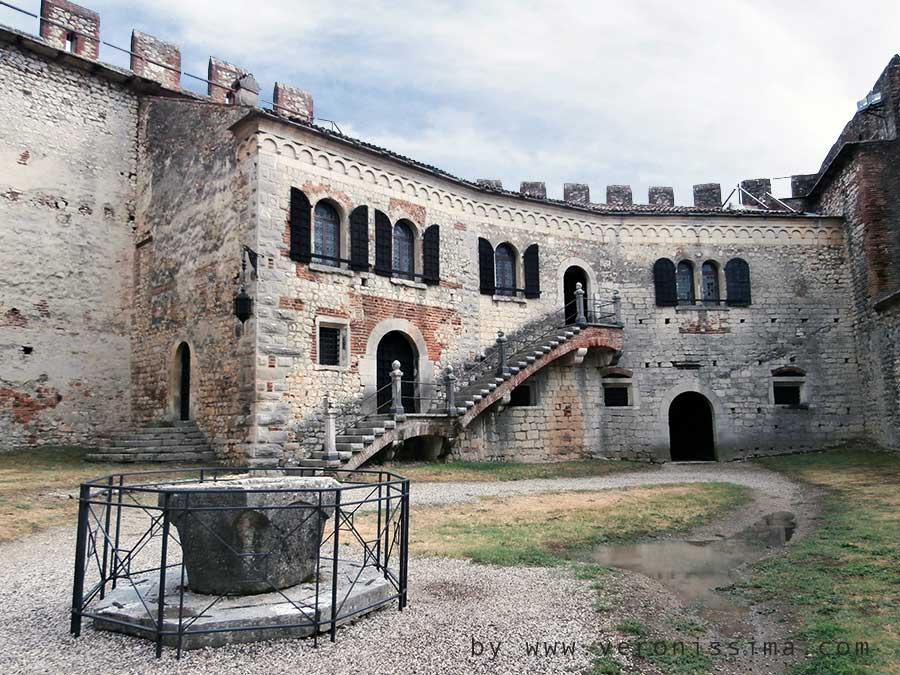
The last and highest courtyard is accessed by means of a modern iron staircase that allows you to overcome a sort of small tower which protects the door also equipped with gates, a further protection in case the enemy managed to pass the first defensive curtains.
As soon as you enter the third courtyard you are in front of the imposing structure of the donjon. In peacetime it was used as a prison and place of torture, in case of attack, it became the last bastion of defense. During the restorations of the late '800, in the basement that until then had remained inaccessible were found many human bones, the remains of those condemned to death or those who died under torture and were thrown down through a trap door.
All along the wall of the courtyard there are signs of the many buildings that stood next to it with traces of chimneys, stairs, stoves. On one side of the entrance, the remains of a fresco show some soldiers and the coat of arms of the Scaligeri: a white ladder on a red background.
At the center of the courtyard, the well that gave access to the cistern below. As old as the castle it would have guaranteed the water supply in case of siege.
On the right side rises the only building of the castle preserved thanks to the restoration.
The Inside
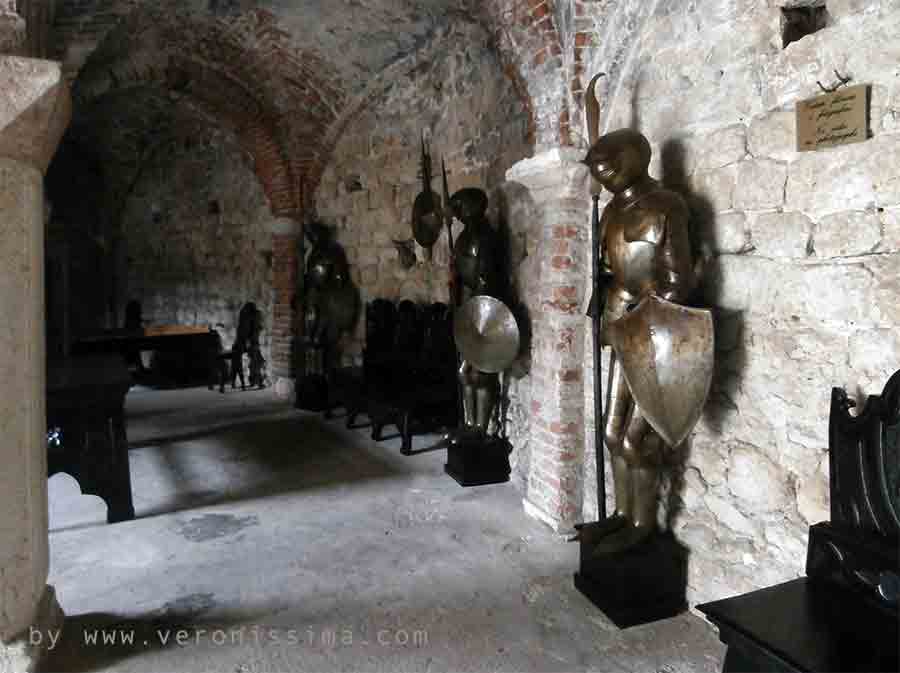
On the lower floor, a rather spartan room with archivolts and asymmetrical columns was intended for the troops stationed in the fortress. Today the room is decorated with armors that give us an idea of how the soldiers dressed and fought.
A stone staircase on the outside leads to the upper floor used by the captain. The first room is characterised by a large fireplace. From here you access the bedroom of the lord, with a four-poster bed, carved furniture and a suggestive frescoed crucifixion dating back to 1200. On the opposite side, the dining room with a large table and the portraits of Cortesia da Serego and Lucia, daughter of Cansignorio della Scala lord of Verona, protagonists of a troubled love story.
Through a narrow passageway you can go up to the patrol walkways.
Walkways and the Keep
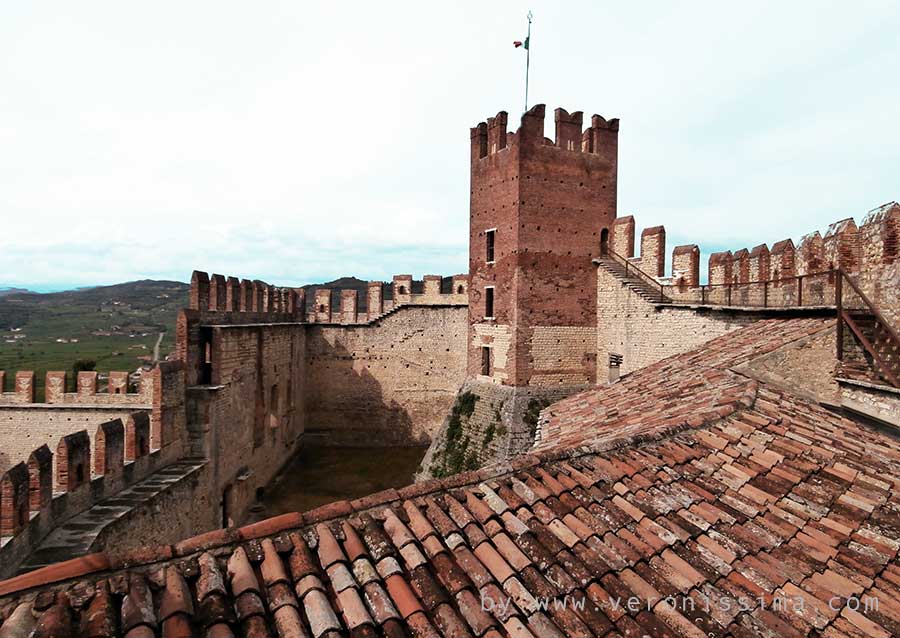
Absolutely safe but definitely unsuitable for those who suffer from vertigo, the walkways of the castle of Soave allow to reach the keep. Inside the tower you can enter the internal rooms and go further up to the embattled terrace at the top. From here it is possible to admire the amazing view of the Padana plain, the valley of Soave covered by vineyards, the Lessini mountains to the north and the Berici hills to the east.
From this elevated position of great impact the castle dominates the vast Venetian plain.
The History of Soave Castle
Arriving from Verona on the A4 Milan-Venice freeway, it is impossible not to notice the large crenellated building on the left in the distance. Likewise, from the top of the castle's walkways and keep, you have a perfect view of the highway and the busy traffic of cars and trucks that cross it non-stop.
Roman Age and the Via Postumia
More than two thousand years ago the vision, with due differences, would not have been much different. More or less where the motorway runs today we would have seen the via Postumia, the important Roman road that connected Aquileia with Genoa and that passed through many of those cities that would later be crossed by the freeway: Verona, Vicenza, Padua and, of course, Soave. Instead of the asphalt of the motorway there would have been the black basalt stones of the Via Postumia. Instead of cars and trucks there would have been carts, horses and mules.
Where the castle stands today there was probably a fortress or a watchtower that controlled the safety of this important Roman infrastructure.
Early Middle Age
The first documentary evidence of the presence of a castle, however, dates back to the tenth century. From a diplomatic document of Frederick I, Holy Roman Emperor, we learn that the castle of Soave belonged to the Count of Sambonifacio.
Communal Age and the Scala Family
In 1270 the Greppi family, who took over the ownership of the castle, before leaving for Lombardy, ceded it to the Commune of Verona, which established a captaincy there. With the rise of the Lordship of the Scala family, who in the meantime had consolidated its power over Verona, the Castle of Soave became a key strategic point for their expansion in the territory of the Marca, as the Veneto region was then called. The castle was restored and renovated, particularly under the government of Cansignorio della Scala in 1379, when the wall that extends from the castle to encircle the entire village was built.
Venetian Era and Decline
With the end of the della Scala era Soave, with all the properties of the seigniory, passed first to the Visconti family, then to the Carraresi family and finally, in 1405 it became part of the vast properties of the Venetian Republic.
At the beginning of '500 Soave was at the center of the battles between Venice and the members of the League of Cambrai and was occupied by the troops of Emperor Maximilian of Habsburg. The castle and the village were set on fire in response to the population's opposition to the imperial occupation. Once the League of Cambrai was dissolved, Soave was finally given back to Venice in 1517.
From that moment on Soave, as well as the whole territory of the Venetian Republic, enjoyed a long period of peace until the arrival of Napoleon in 1796.
In the meantime, however, the evolution of war technology had made the castles completely useless. The high walls that had effectively kept out men, arrows and spears, proved helpless in front of gunpowder and cannon fire.
Giulio Camuzzoni and the Restoration
When in 1889 the castle was purchased by Giulio Camuzzoni, the first mayor of Verona after the unification of Italy, the castle of Soave was in a state of complete abandonment. Giulio Camuzzoni carried out a long restoration work in order to bring the castle back to the original shapes that can still be admired today.
For any further questions or more detailed information on guided tours and tourist itineraries in Soave and its territory:
Info & Bookings:
+39 333 2199 645 info@veronissima.com P.I. 03616420232 C.F. CPPMHL74L13L781C

 IT
IT 日本
日本 DE
DE FR
FR 中文
中文 ES
ES